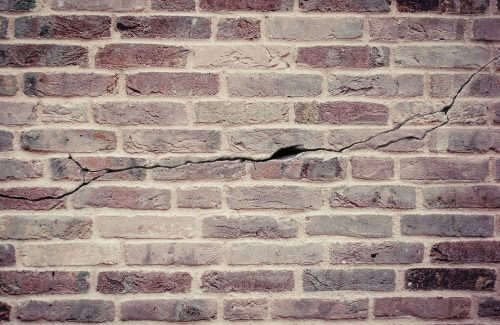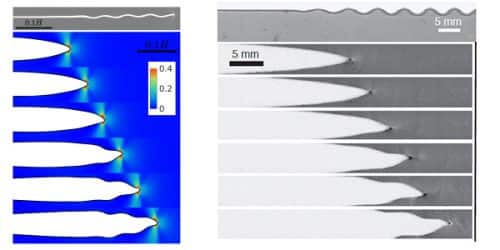A new theory by which it is possible to understand, calculate and predict the development of cracks under different physical conditions

It is the weak link that determines the strength of the entire chain. Similarly, the defects, or cracks in a solid material, are the ones that determine the strength of the material, that is, its ability to withstand various loads. When an external force is applied to a solid material that has a crack, large internal forces are concentrated in a small area around the edge of the crack, and they may cause failure of the material near the edge of the crack, and thus - the propagation of the crack until a failure occurs which may cause collapse. But what exactly happens near the edge of the crack, in the area where great forces are concentrated?
Prof. Eran Buchbinder, from the Department of Chemical Physics at the Weizmann Institute, who examined this question together with Prof. Alan Karma and Dr. Chi-Hong Chen from Northeastern University in Boston, United States, says that the processes that occur in this area are universal, and occur in the same format in different materials and situations Different. These findings were recently published in the scientific journal Nature physics. "The most striking feature we noticed," says Prof. Buchbinder, "is the non-linear relationship between the strength of the applied forces and the reaction that takes place in the material near the edge of the crack. It turned out that this non-linear region, which is usually not taken into account, is of great importance when seeking to understand instabilities in crack propagation; For example, cracks that spread along wavy or split paths, even though we expect them to spread along straight paths."

Prof. Buchbinder and his research partners examined the system of forces that operate at the base of the fracture or crack, and developed A new theory through which it is possible to understand, calculate and predict the development of the crack under different physical conditions. This theory may have important consequences in the study of materials, and in understanding the reasons for the formation of failures in them.
The development of the wave instability of ultrafast cracks, as obtained by calculation according to the new theory. The transition between a straight path and a wavy path occurs when a critical speed threshold is passed (about 92% of the speed of elastic waves). The theoretical result corresponds to the result obtained in the experiment. The black line represents the surface of the cracks.
In the video: the incarnation of a crack in a fragile gel. Video courtesy of Dr. Ariel Livna, Tamar Goldman and Prof. Jay Feinberg from the Hebrew University
